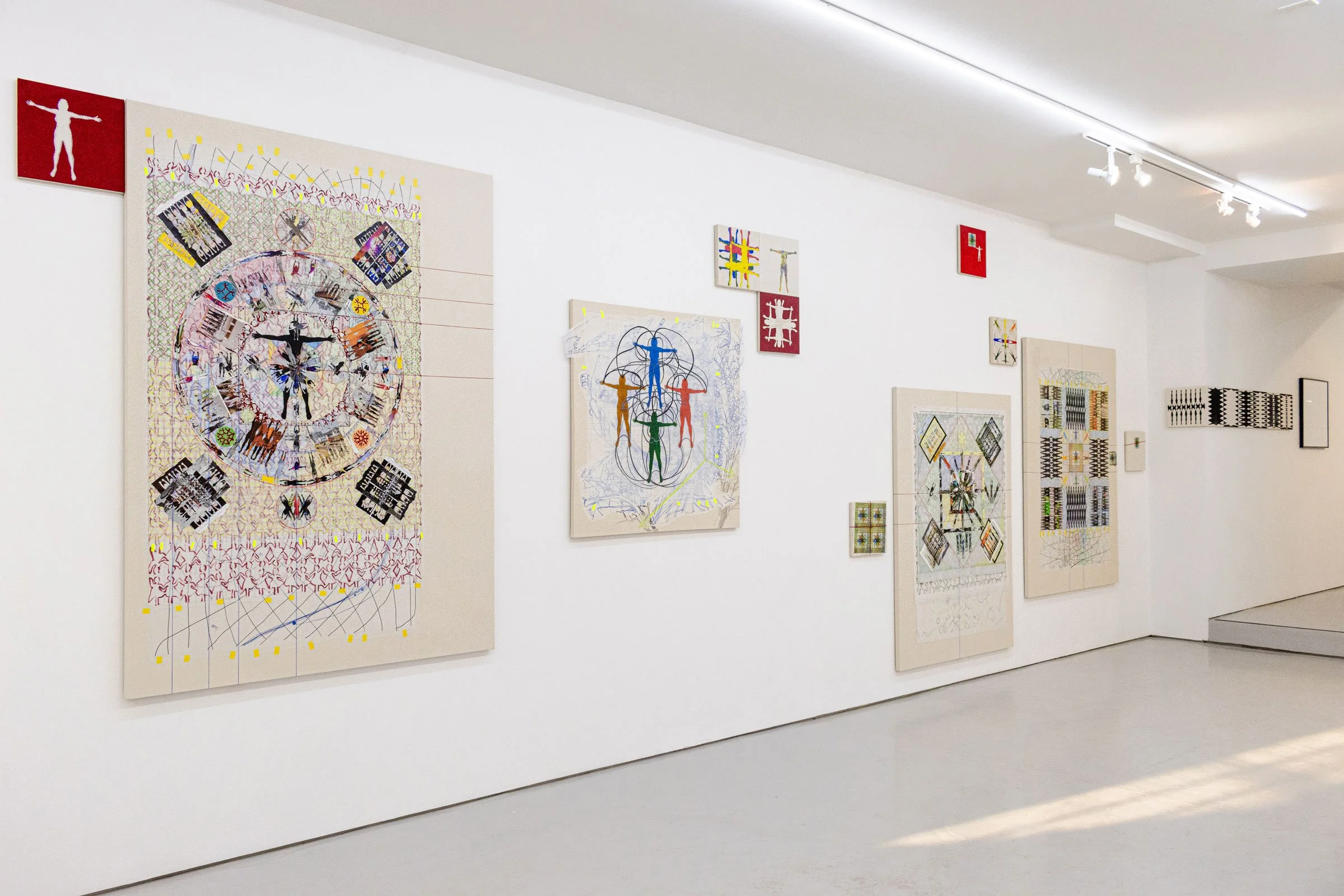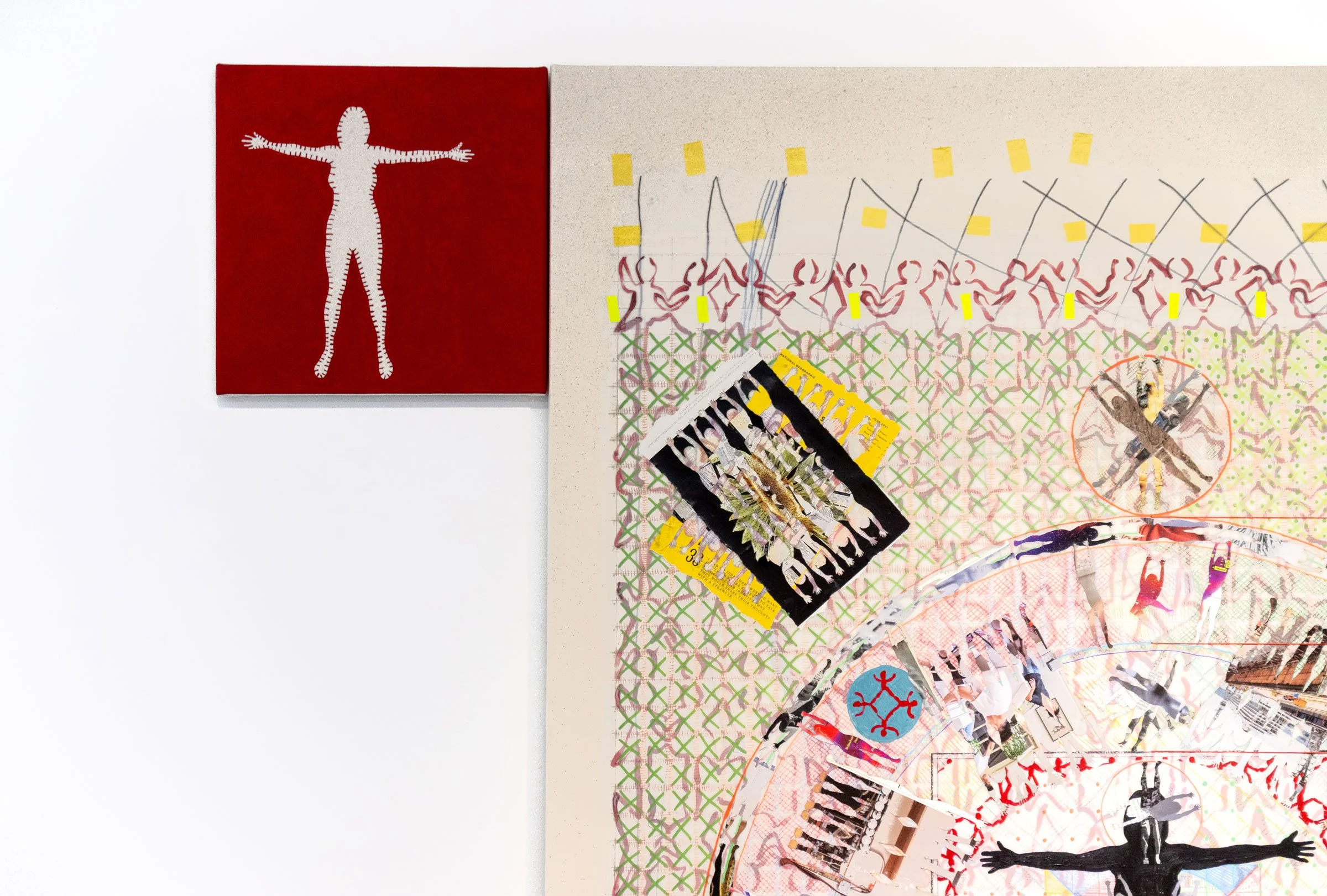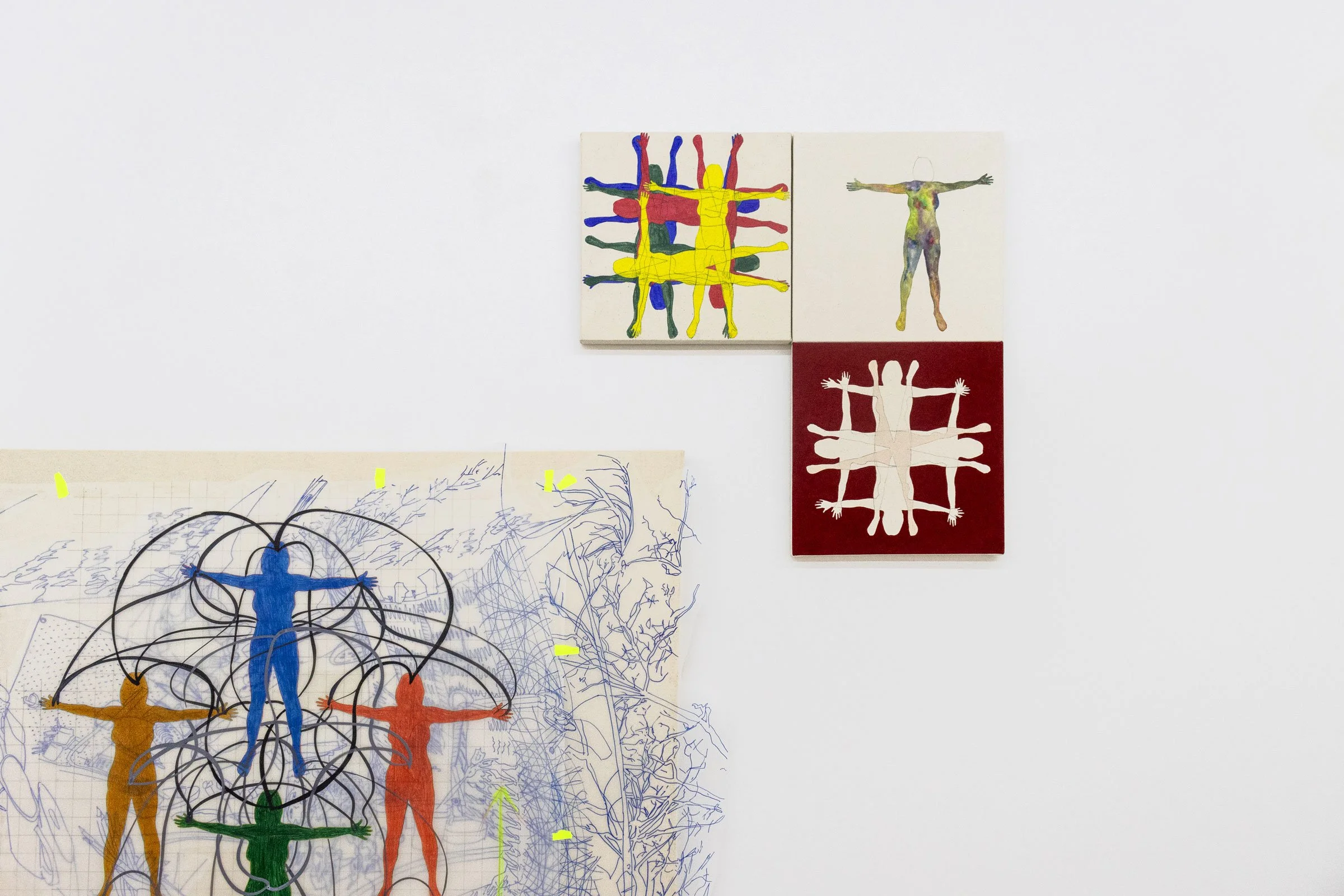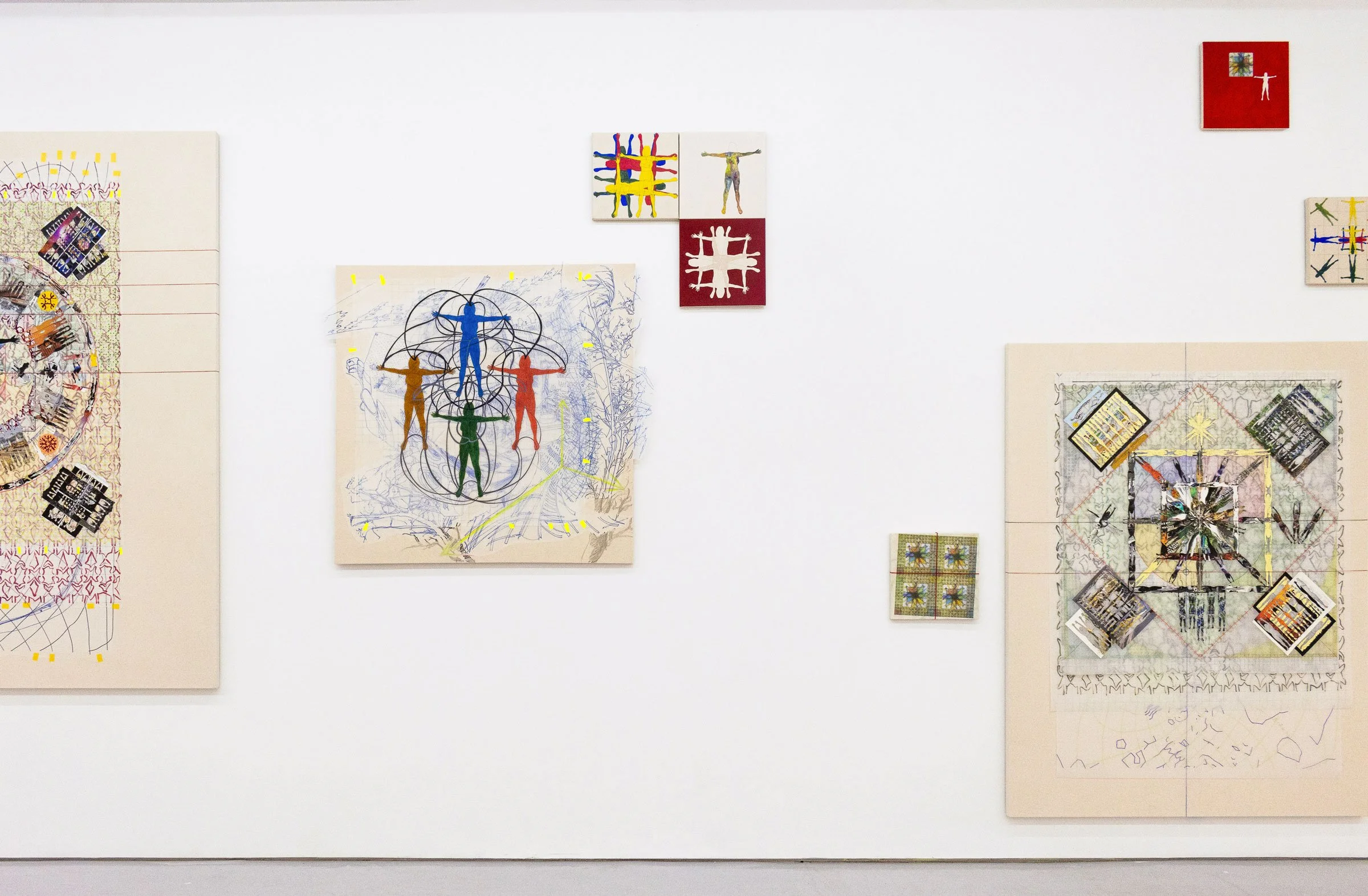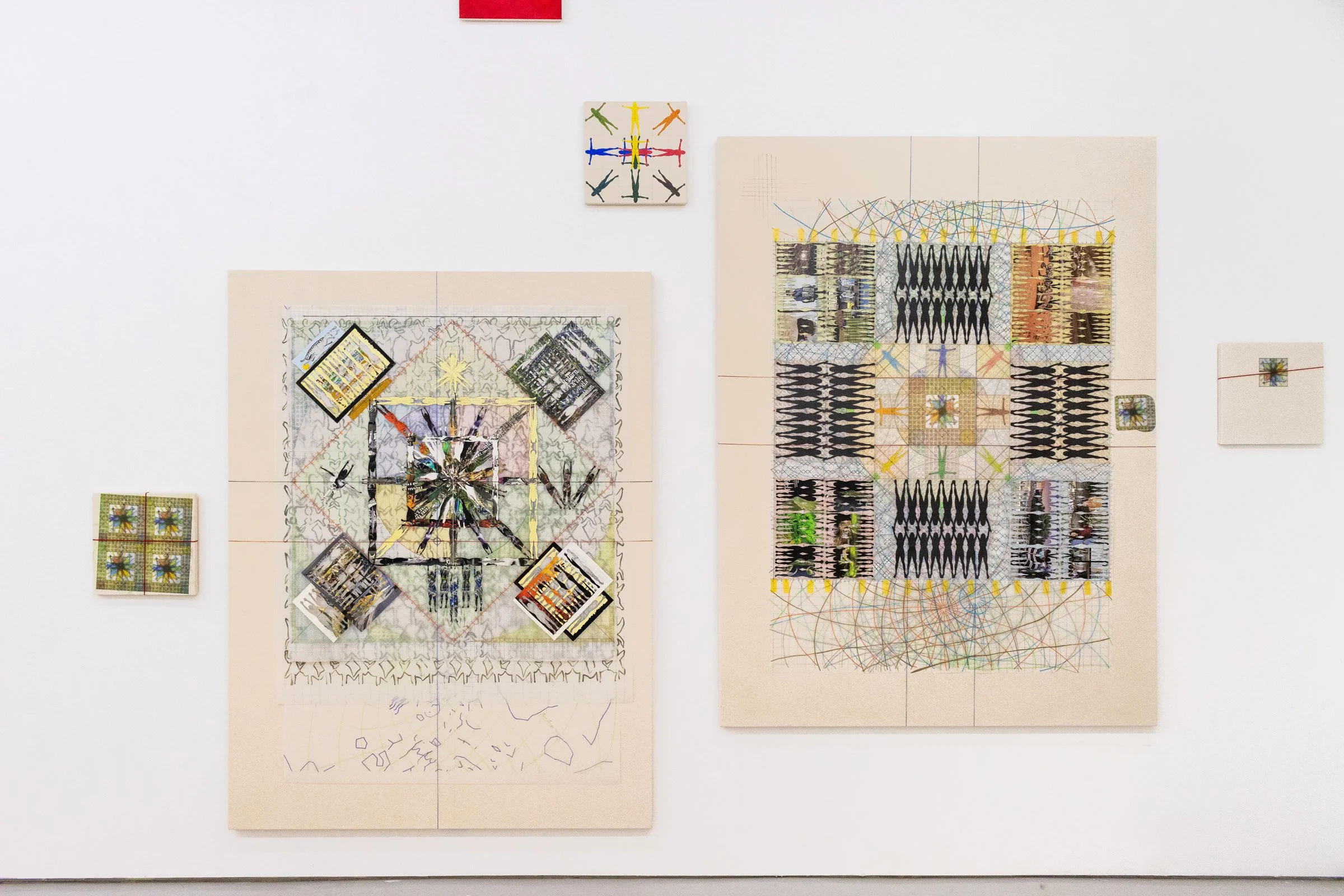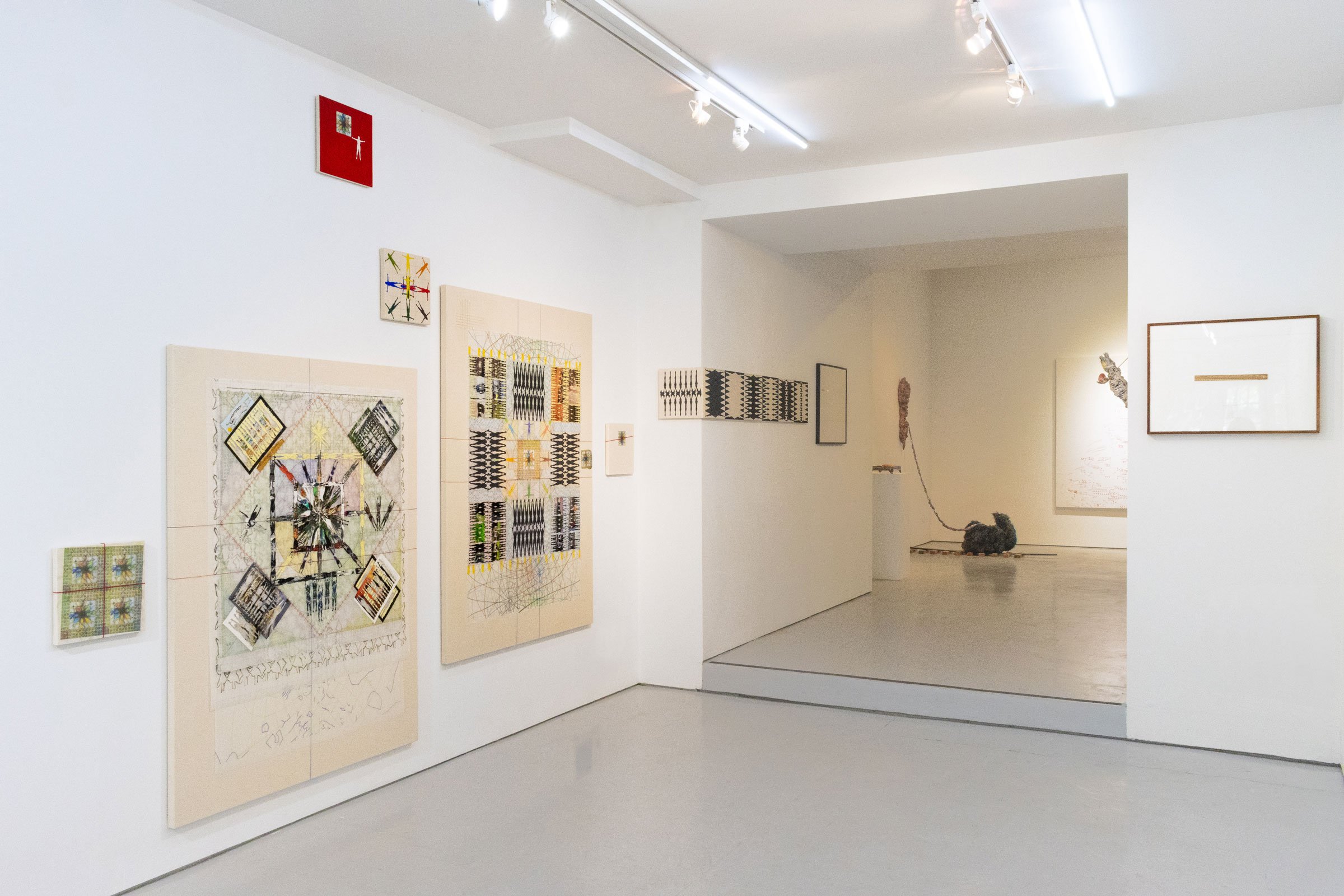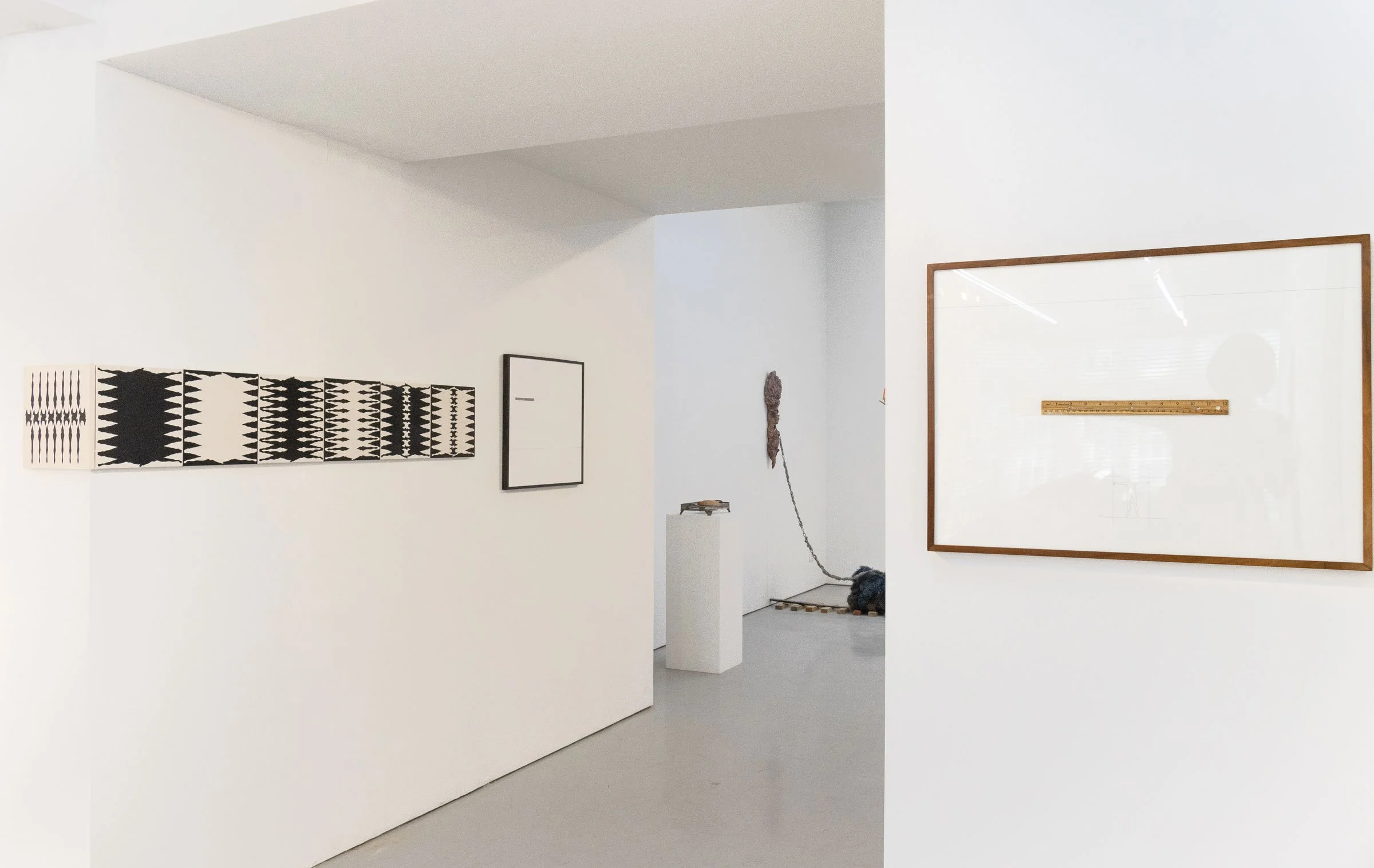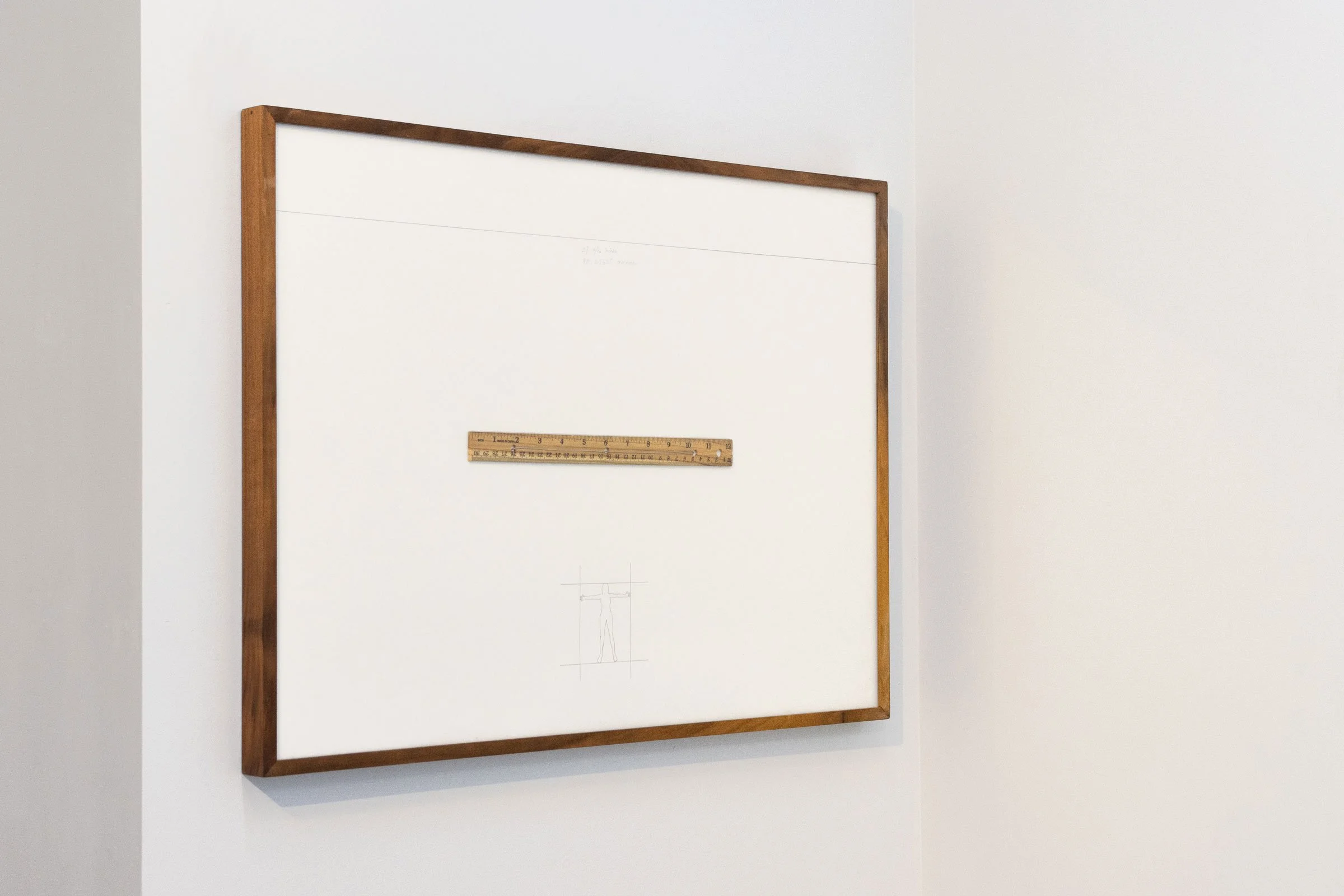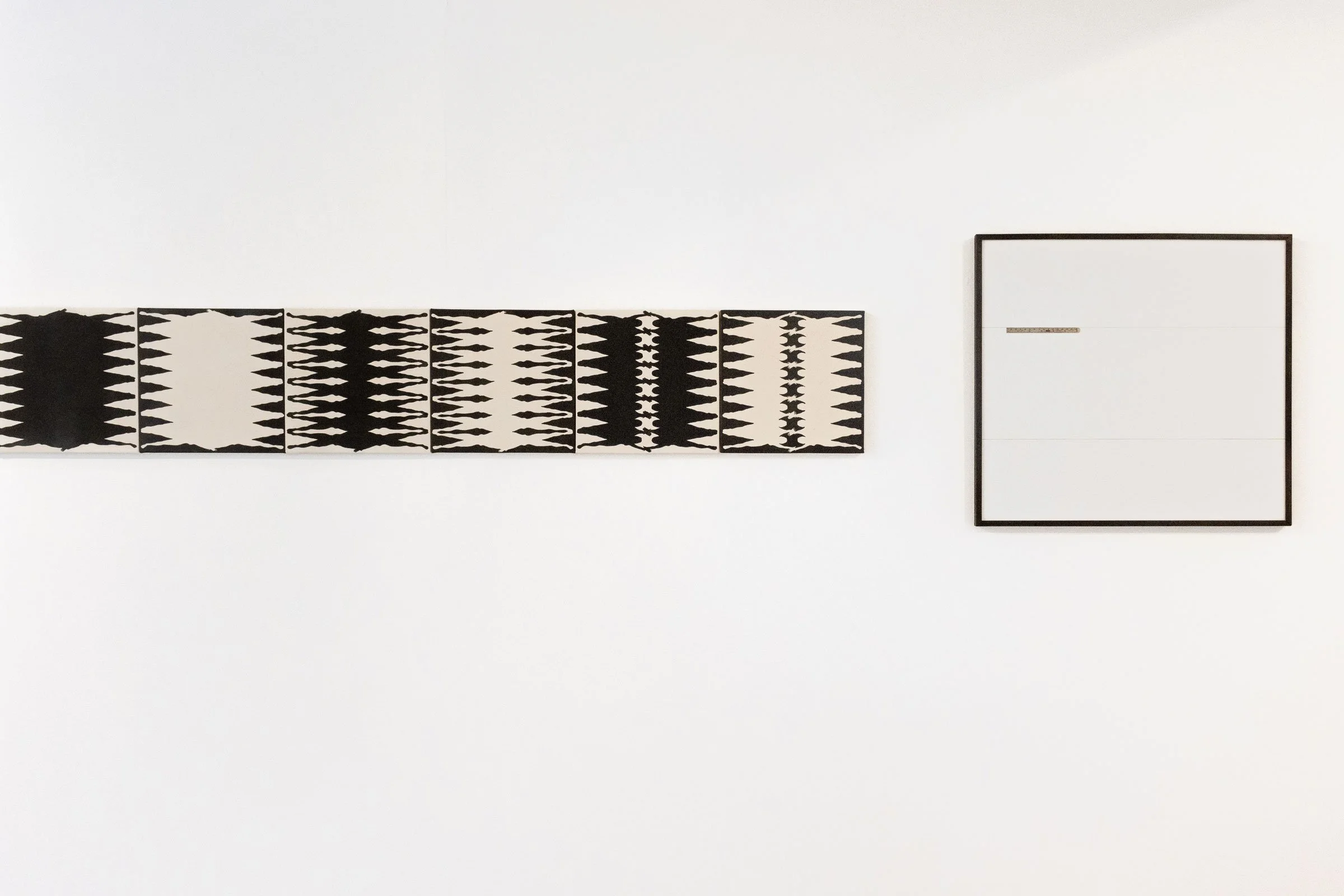Shuai Yang
(b.1998) New York based artist
Three series of my recent paintings, mixed media on canvas, and drawings are featured in this exhibition. A painting of a red stitched figure initiates this constellation, where twenty-one works of various sizes and materials are installed on the walls with an underlying gridded structure. Each artwork's relationship to other paintings and the architectural space is carefully calculated. These recent works display Yang's exploration to intermingle the concepts of printmaking with painting language, explicitly the ideas of layering, repetition, and multiplicity, and present her new direction in the philosophy of measurement.
Among the artworks on display, How Much Is It No.1 is an instruction to Yang's method of using herself as the measurement. This drawing employs three elements from the subject: the measured existence, the measuring instrument, and the measurand (the result of measurement represented by Arabic numbers, imperial, and converted metric units here). This piece is made with a giveaway museum frame, which was passed to her by a friend. Yang based her mediation on the existing dimensions and indicated the width of the framed image ground with a pencil line. The line is labeled with written numbers "27 11/16 inches" and "70.32625 centimeters", results gained from measuring with a wooden ruler she bought in a convenience store. Yang fixed the ruler underneath the measurand and drew a diagram at the bottom of the page displaying her body being measured without indicating any final product. The palm-size diagram pinpoints the act of measuring a body and, due to its physical size, suggests the representativeness of scale in image-making. Importantly, this drawing marks a milestone in Yang's investigation of knowledge and reality.
Carrying a black and white minimal look, How Much Is It No.2 is also mediated upon a giveaway frame. This time, Yang removed the protective glass, covered the mat board with the gallery's wall paint, and drew two parallel pencil lines across the framed area. The lower line stays as is, while a hardware store-bought metal ruler is placed on the upper line, emphasizing the act of measuring. The metal ruler is a reference for informational comparison, and it assigns a value to the line and (less directly) passes around the value system to its nearby elements.
Visually more complicated than the two works described above, Centerless Energy and the Countable Me series presents Yang's experimentation of translating drawings on drafting plastics onto canvas. Each painting contains two to three layers of drawing, painting, and collage on semitransparent plastics depicting Yang's body silhouettes, geometrical compositions, and astronomy coordinates. These works were created under self-made rules, including the gridded patterns, choice of colors, compositions, and drawing marks. The methods captivate a meditative process, which contributes to the mind-mapping intention.
n+1 is a series of square-shaped paintings that was initiated in the summer. Square canvas allows image rotation and combination, similar to tile making. Other than acrylic paint, Yang incorporates risograph prints and yarn into some of the works, introducing tactile physicality to the "flatland" of the image. n+1 No.23 to No.29 reveal Yang's interest in a more abstract approach to using stencils and patterns. By making different painting iterations using one stencil of her body's silhouettes, Yang adopts the printmaking philosophy again, reconciling the positive and negative space. The outcome displays optical ambiguity, challenging subjective and objective knowledge, bridging her research direction into epistemology.
